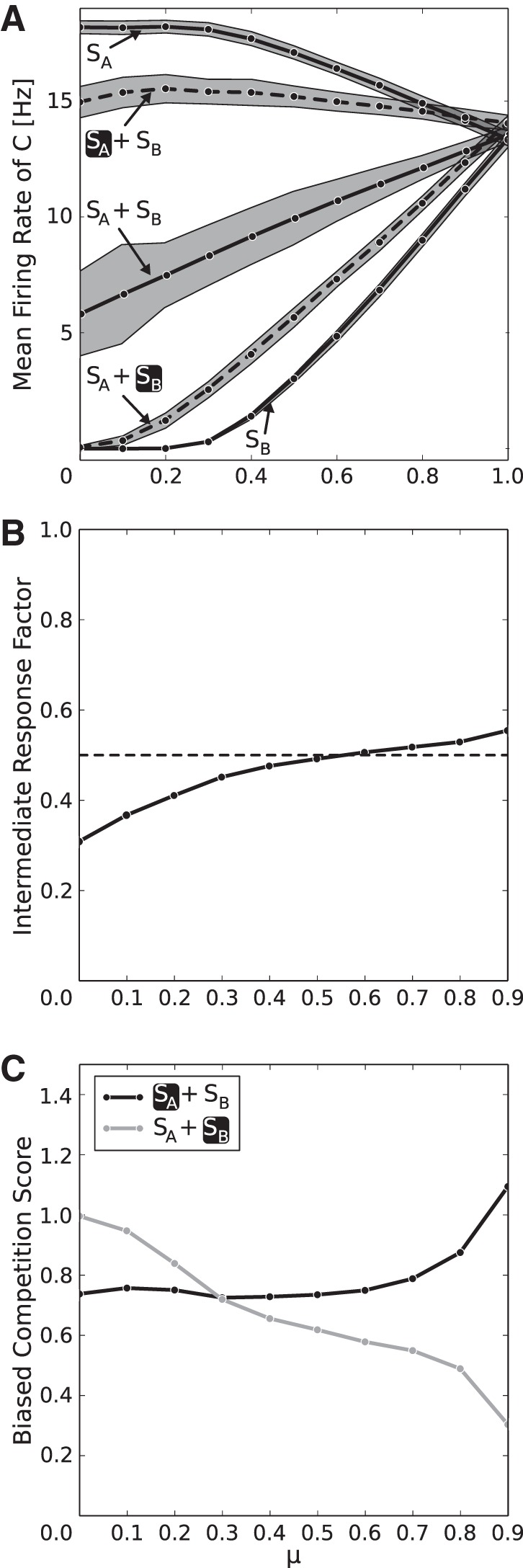Fig. 5.

Biased competition effect for different values of the mixing parameter μ, which regulates the relative stimulus preference. A: in the 2nd layer, mean firing rates show consistent normalization if both stimuli are present (SA + SB) and partial attentional recovery (dashed lines, black box marks attentional focus) to the rates the stimuli elicit when presented alone (SA/SB) over the full range of possible values for μ. If μ = 0, SB elicits no response in C, whereas if μ = 1, responses elicited by SA and SB are equally strong. The shaded areas visualize the SE. B: for values of μ ≥ 0.3, i.e., where the nonpreferred stimulus elicits a nonzero response (see A), we observe an intermediate response factor of ≈0.5, which means that the rate when both stimuli are presented lies approximately at the mean of the responses when only 1 stimulus is presented. C: in the same range, the biased competition score in population C, quantifying the degree to which single stimulus responses are recovered under attention, is ∼0.8 for preferred-rate recovery (black line) and around 0.6 for nonpreferred-rate recovery (gray line), revealing a slight bias of the attentional rate recovery for the preferred stimulus. A value of 1 would correspond to perfect rate recovery, whereas 0 would mean that attention has no effect on the firing rates.
